Thermal insulation for chimney pipes is a prerequisite, thanks to which it is possible to extend the life of the entire heating structure and at the same time reduce heat loss in the house. The material and method for insulating the pipe is selected depending on the type of chimney (stone, steel, ceramic, asbestos-cement).
- Why insulate the chimney
- Insulation materials
- Mineral wool
- Basalt wool
- Kaolin slabs
- Roll filters
- The nuances of self-insulation of the chimney
- Chimney insulation principles for different types of pipes
- Galvanized steel pipe for solid fuel or gas boiler
- Insulation of an asbestos pipe
- Insulation of a brick chimney
Why insulate the chimney
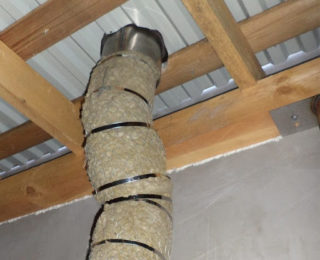
Chimney insulation is important for several reasons:
- The chimney, which removes hot smoke from the room, has an elevated temperature during working hours. From the outside, it is affected by low temperatures, atmospheric precipitation. The temperature difference outside and inside sooner or later leads to the destruction of the material, be it brick, metal, asbestos.
- A pipe insulated from the outside does not tend to accumulate condensate on its walls, which is a mixture of acids and water. The absence of condensation excludes icing, metal corrosion, weighting of the roof structure, destruction of the pipe.
- The insulated chimney pipe allows you to keep heat in the room, reduce fuel consumption and increase the efficiency of the heating system.
Less soot accumulates inside the insulated pipe. As a result, work on the maintenance of the smoke exhaust system is reduced, the family budget is saved.
Insulation materials
When choosing a heater to carry out insulation for a chimney, it is important to pay attention to its properties. The material must have good thermal insulation characteristics and must not be combustible. It is desirable that the insulation has low hygroscopicity.
The best options for insulating a chimney in a bathhouse or house are several types of materials.
Mineral wool
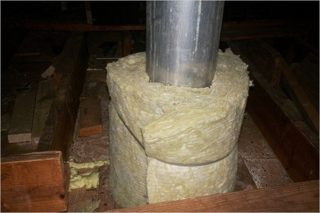
It is a fibrous material that has an air gap. Thanks to a special treatment, mineral wool is non-flammable, while retaining its shape even when exposed to high temperatures. It is inexpensive.
Mineral wool insulation has several disadvantages:
- susceptibility to deformation over time;
- ability to absorb moisture.
Mineral wool is used less and less as an external insulation, since it is necessary to well isolate open areas, place it in a hard shell (frame).
Basalt wool
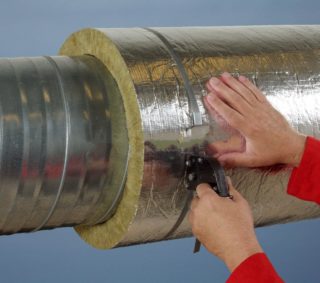
This insulating material has the following technical characteristics:
- Low thermal conductivity, which can be compared with polystyrene, cork materials, rubber.
- High level of fire resistance. Basalt wool can withstand temperatures over +1000 ° C without losing its thermal insulation properties.
- Excellent waterproofing properties. Water is not able to penetrate into the basalt wool.
- Resistance to mechanical stress. In the production of basalt wool, the fibers in it are alternately arranged vertically and longitudinally. This design allows it to withstand fairly high compressive loads.
Basalt wool is produced mainly in slabs. Therefore, to insulate the chimney, you will have to build a special outer box.
Kaolin Slabs
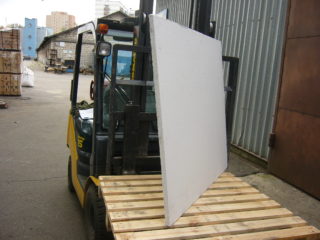
Kaolin is absolutely safe for human health. Does not emit toxic substances into the atmosphere even at high temperatures. Kaolin slabs are resistant to fire, therefore they can be used for insulating chimneys of fireplaces, stoves with open fire.
It is easy to work with viburnum plates because they are light in weight. The peculiarity of the insulation is that, with a minimum density, its insulating ability is quite high. This means that when carrying out repair work, it is possible to preserve the useful area around the chimney inside the room.
Roll filters
Externally, they are cylinders, the outer part of which is made of foil material, and the inner part is made of foamed material. Roll filters are especially good for galvanized steel pipes. Such insulation can withstand high temperatures, is resistant to fire and high humidity. The only condition for installing roll filters is reliable sealing of the joints in the upper open part of the roll from atmospheric precipitation.
The nuances of self-insulation of the chimney

It is recommended to adhere to these rules when insulating the chimney of a gas boiler or furnace with an open fire:
- The outer, open part of the pipe is always and necessarily insulated.
- Pay attention to the area where the pipe is located in the transition between the roof and the floor of the attic. It is believed that it is relatively warm in the attic in winter and there is no need to insulate the pipe here. However, at very low temperatures outside, condensation may accumulate in this part of the chimney.
It is better to carry out the work together in order to insure each other in an open roof space.
Chimney insulation principles for different types of pipes
Thermal insulation of a chimney from a gas boiler or a furnace with an open fire should be done by novice craftsmen in accordance with the step-by-step guide.
Galvanized steel pipe for solid fuel or gas boiler
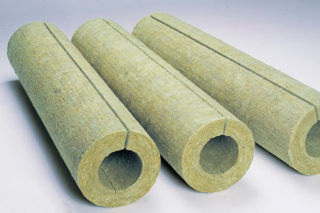
For metal and iron pipes, the best option is to use a special sandwich shell made of stainless steel or galvanized steel with an inner layer of foamed thermal insulation. They are selected according to the diameter of the existing pipe and simply put on top of the chimney. Then the joints are insulated if necessary.
When installing such cylinders, you should adhere to the principles of the device outside and inside:
- Inside the building, experts advise to arrange pipes in the direction of the smoke - insert each lower pipe into the upper one. Crimp the joints with clamps.
- In the area where the chimney exits to the street and from the side of the roof, the insulation is collected along the course of condensate. - the upper part is inserted into the lower one.
For the attic area, it is advisable to use a through-sleeve made of rubber and an insulating layer. Before insulating the metal chimney pipe, it is necessary to fix it well so that the heat-insulating material does not exert strong pressure on the structure.
Insulation of an asbestos pipe
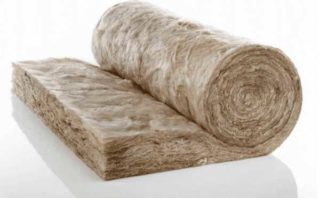
The best option for insulation would be mineral wool roll or brick.
If we are talking about a brick, it is necessary to first make a protective casing for the asbestos pipe, the diameter of which exceeds the cross-section of the chimney by 12 cm. First, all sections of the casing are assembled around the pipe by 1.5 m. Each part of the casing is filled with broken brick. The joints of the sections are fully sealed.
To insulate an asbestos-cement pipe with mineral wool, they tightly wrap the chimney with it and tighten it with clamps in steps of 50 cm. From above, the insulation winding is well waterproofed. The waterproofing material also needs to be well wrapped around and tightened with clamps.
Insulation of a brick chimney
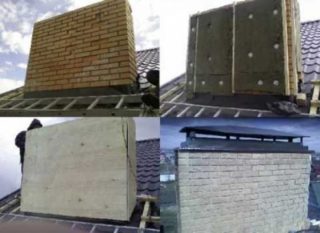
A brick pipe can be insulated in two ways:
- Plastering. A special layer of plaster is placed on the reinforcing mesh.Thanks to this layer, it is possible to reduce heat loss by 25%. Before carrying out work, it is necessary to close the furnace gas damper of the chimney (in the case of a gas boiler). The plaster should be applied in 3-5 layers.
- Sheathing of a brick pipe with basalt wool slabs. Plates can be planted on special construction umbrellas. They are also plastered from above. Basalt wool squares should be laid like brickwork, with an offset. This reduces the likelihood of cold bridges on the outside of the chimney.
When insulating a chimney, attention must be paid to the joints. These areas are a potential risk to the pipe. Condensation forms through the cold bridges, which later leads to icing of the floor structure and an increase in heat loss.








